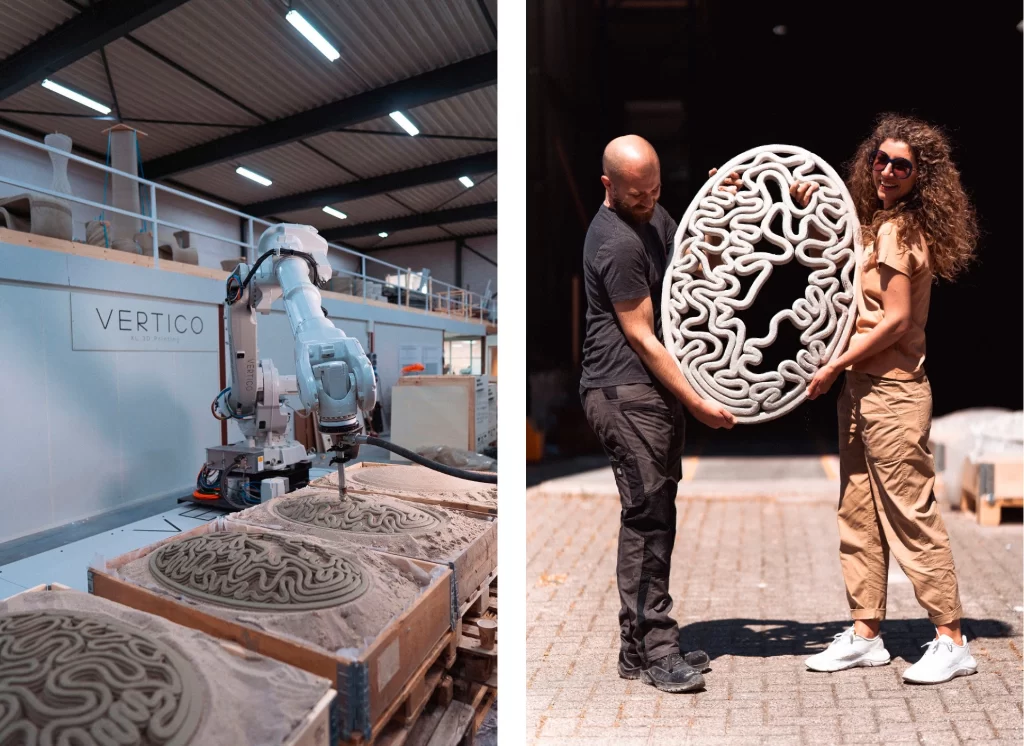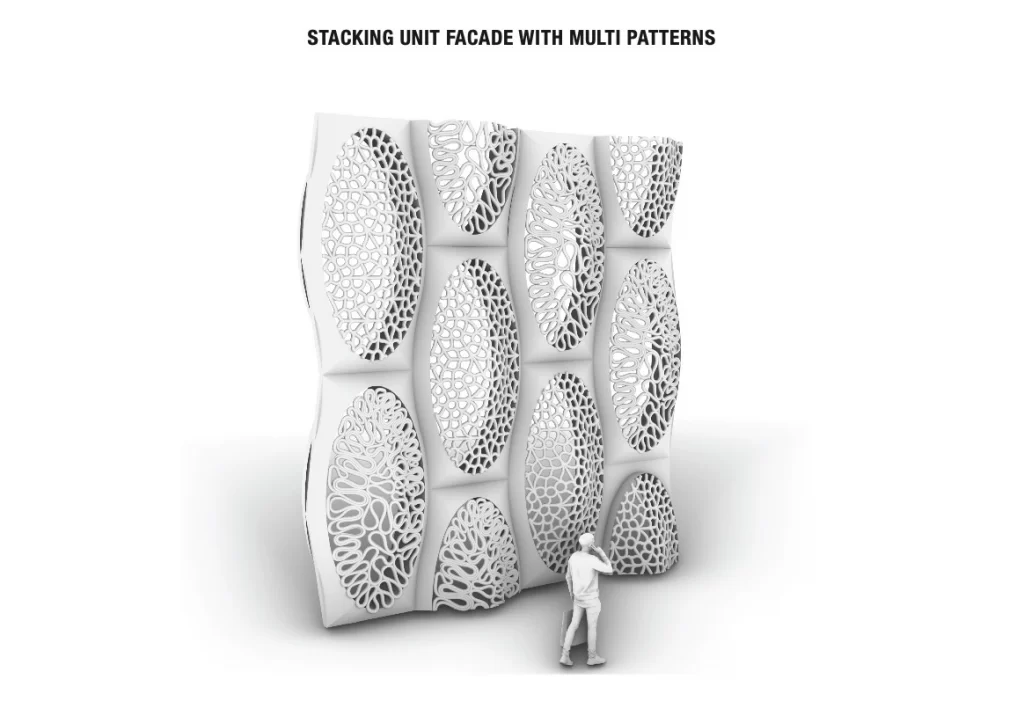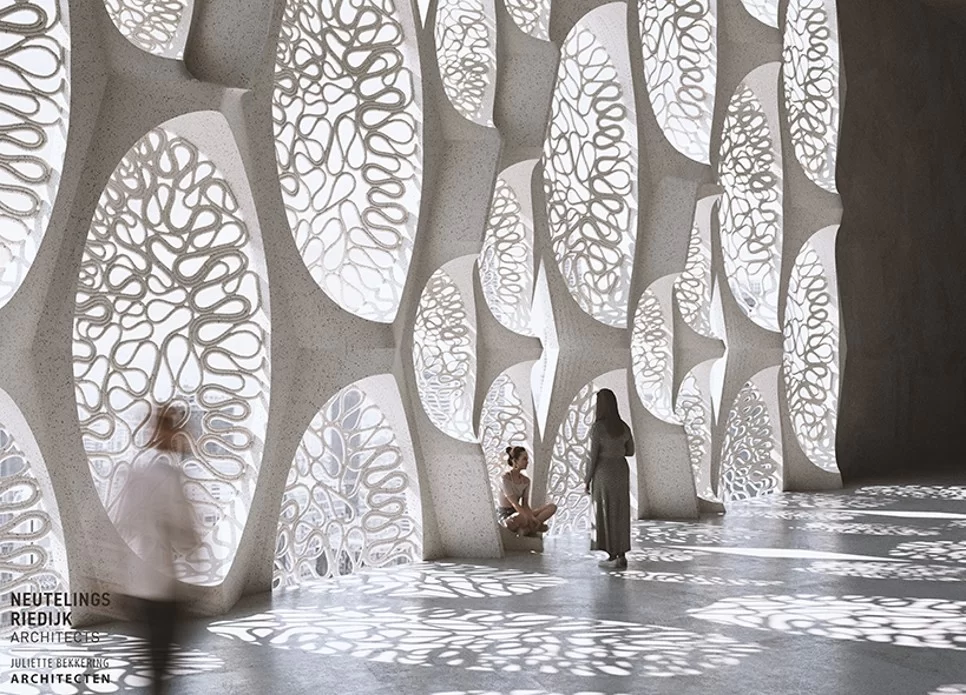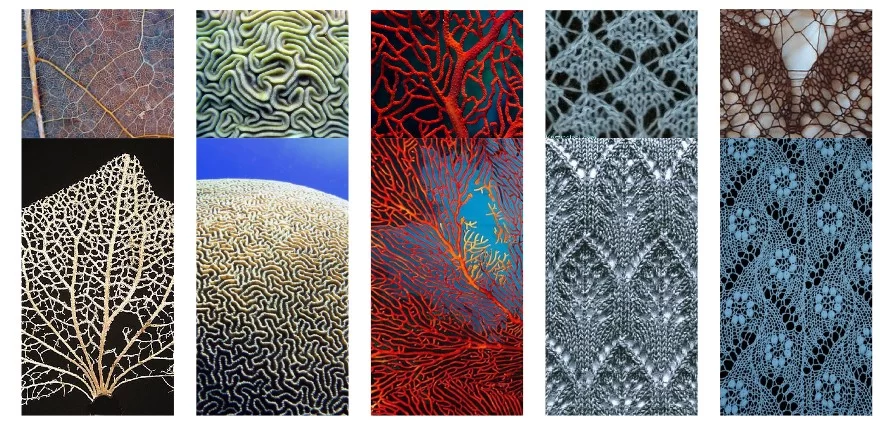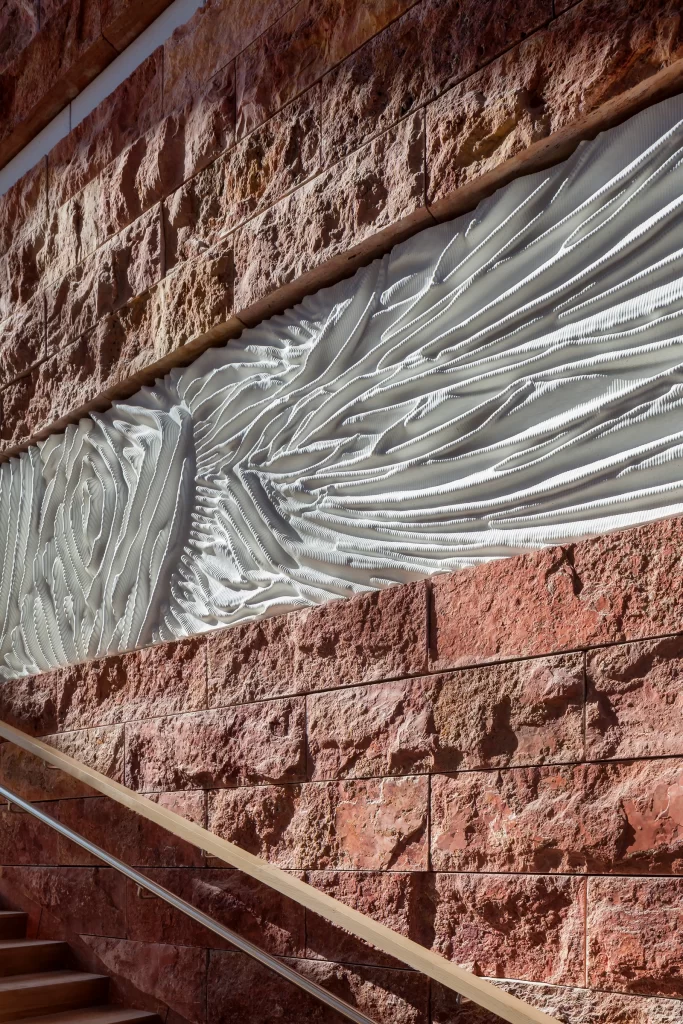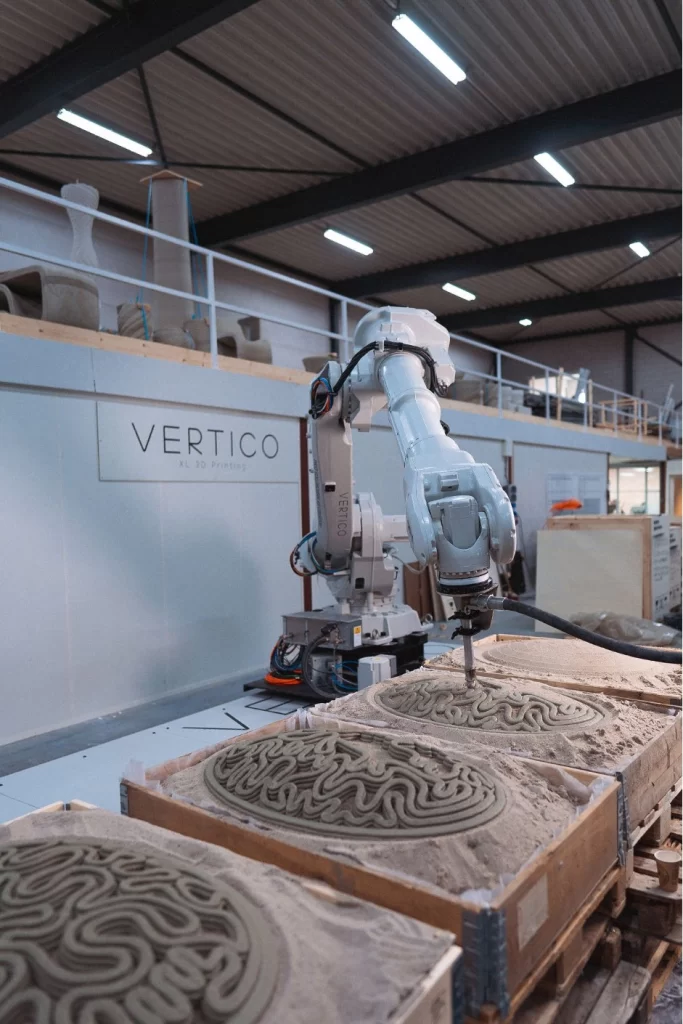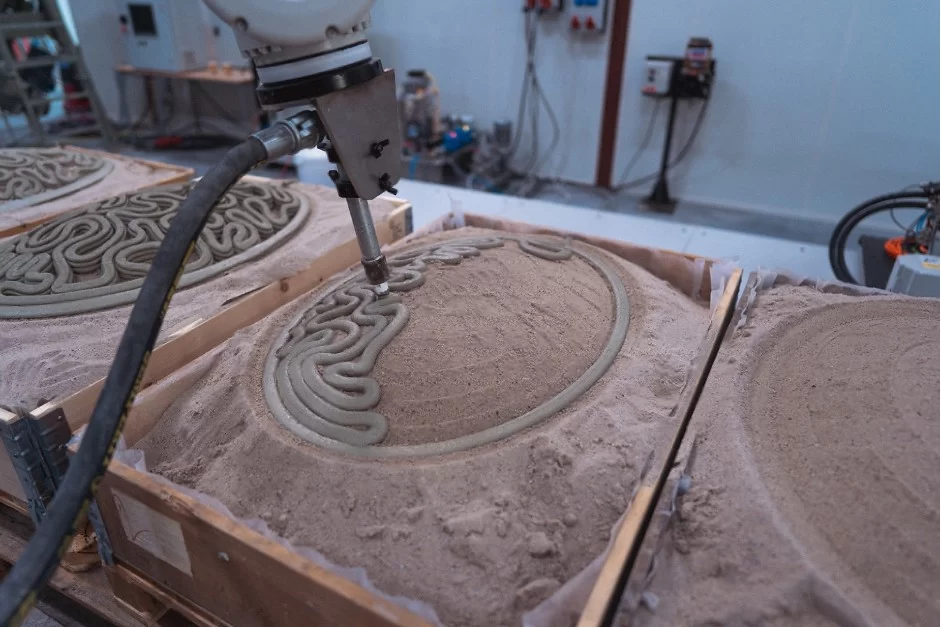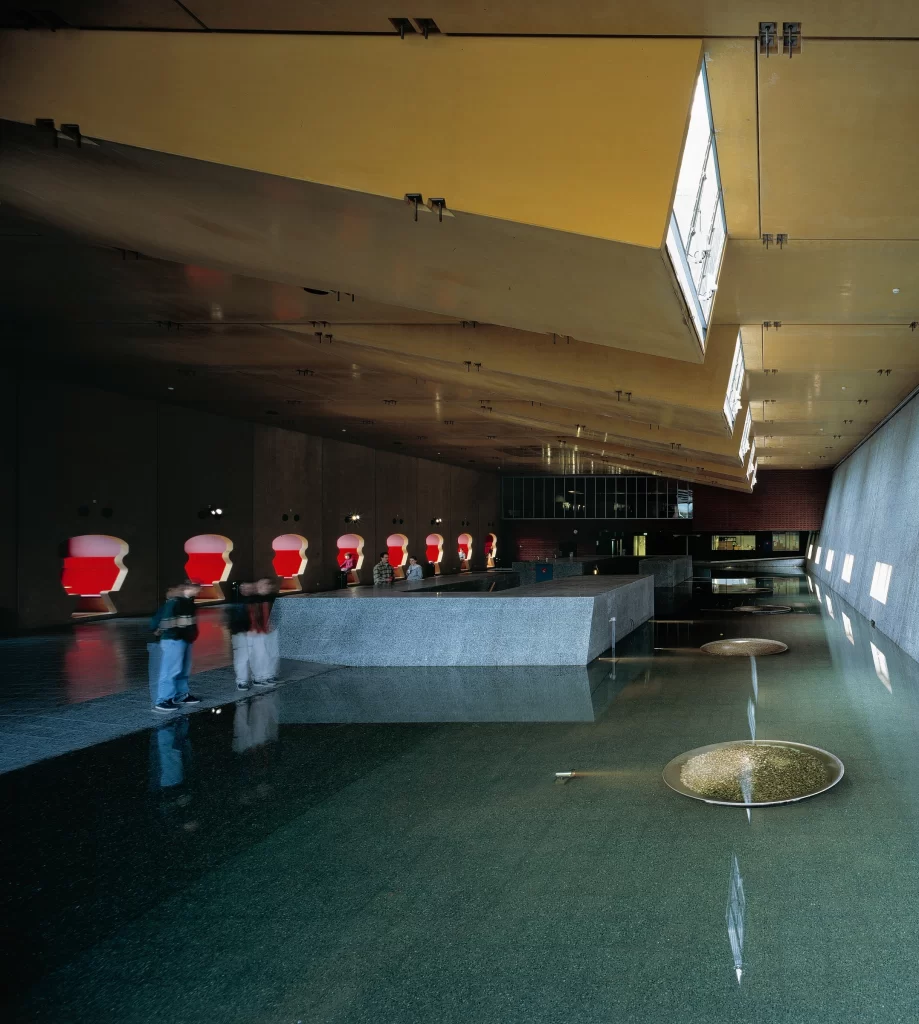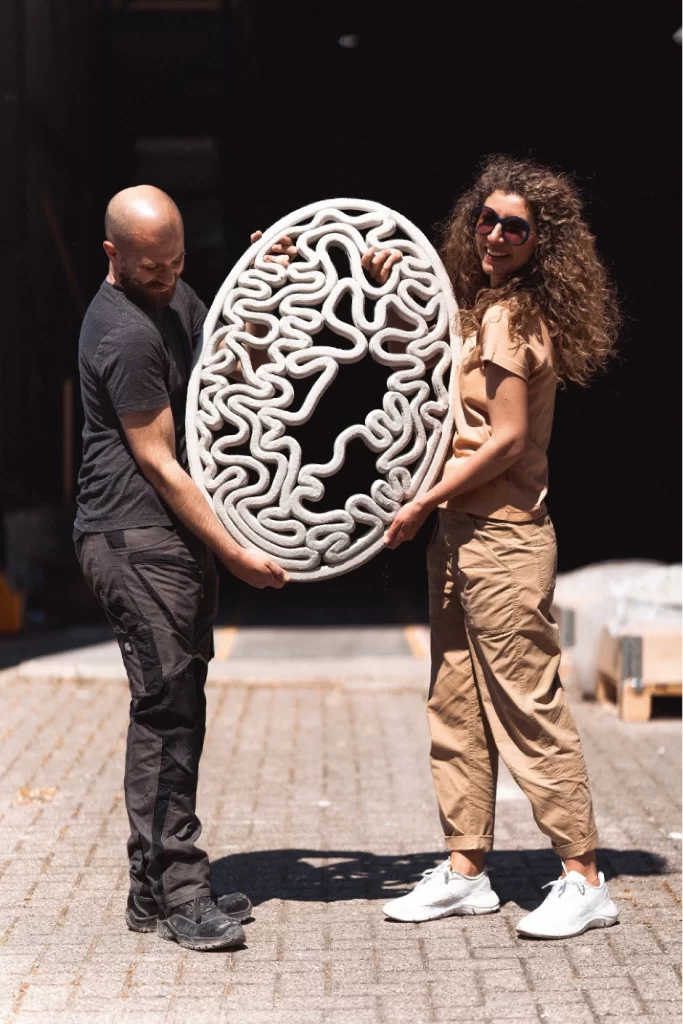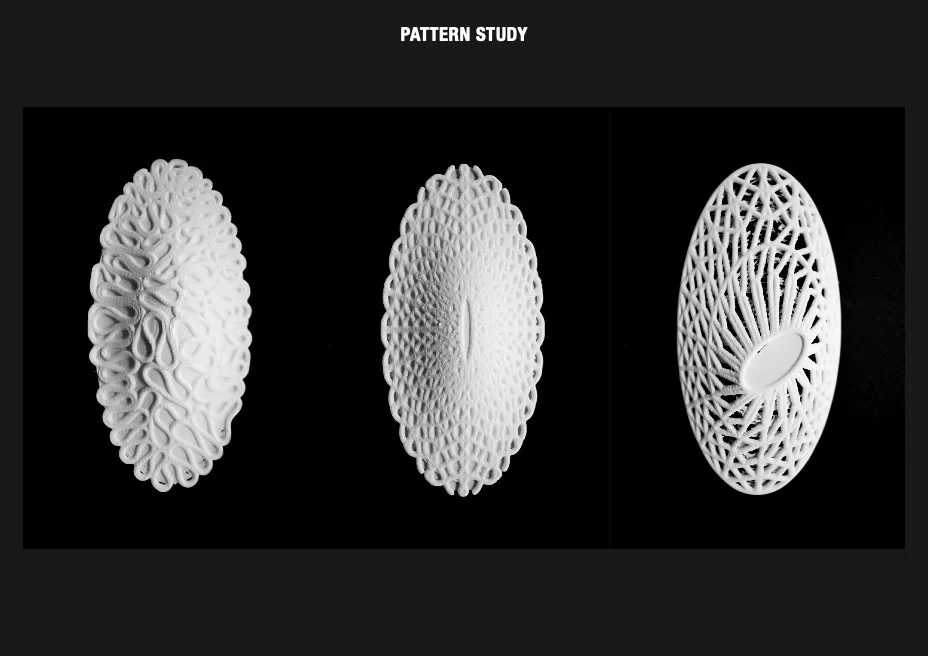Together with the Department of Architecture and Engineering at TU Eindhoven, led by Prof Juliette Bekkering and the specialized 3DCprint company Vertico, Neutelings Riedijk Architects delved into the possibilities of 3D printing concrete. The research focused primarily on the technical feasibility of double-curved facades with filigree infill, a visual language as has been applied more often by Neutelings Riedijk Architects.
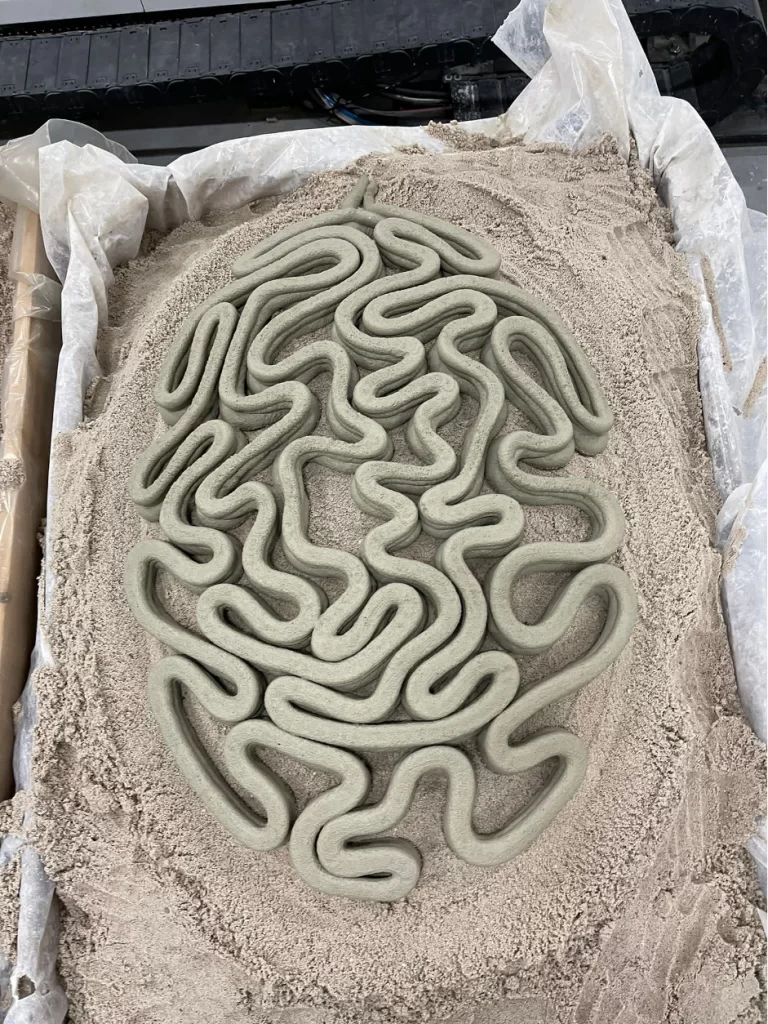
Circular moulds made of sand
For a year, all parties involved investigated the architectural possibilities of 3DConcrete Printing (3DCP) on circular double-curved moulds. Central to this research was that both the architectural possibilities were explored, i.e. how the typical properties of the 3DCP technique can lead to an appealing image and a new expression in architecture, and the technique was developed to actually make it. Robots were used to make circular moulds of sand, formed into a double-curved bed on which the concrete elements were printed.
CREDITS
Funding Body:
Dutch Research Council (NWO): KIEM-CE Grant
2022 — 2023
Team:
Eindhoven University of Technology, faculty of the built environment — Chair of Architectural Design and Engineering ADE
Prof. Juliette Bekkering, Architect, Assist. Prof. Cristina Nan (architect and computational design and digital fabrication specialist)
Neuteling Riedijk Architects
Michiel Riedijk, Founder; Chaoyu Huang, Alexandra Gwardiak, Architects
Vertico — 3D Concrete Printing Specialists
Volker Ruitinga, Founder; KeesLeemeijer, Robotic Fabrication Engineer;
OrestisPavlidis, Robotic Fabrication Engineer
Researcher:
Alessio Vigorito, structural engineer
Supported by
Betonhuis
Cindy Vissering
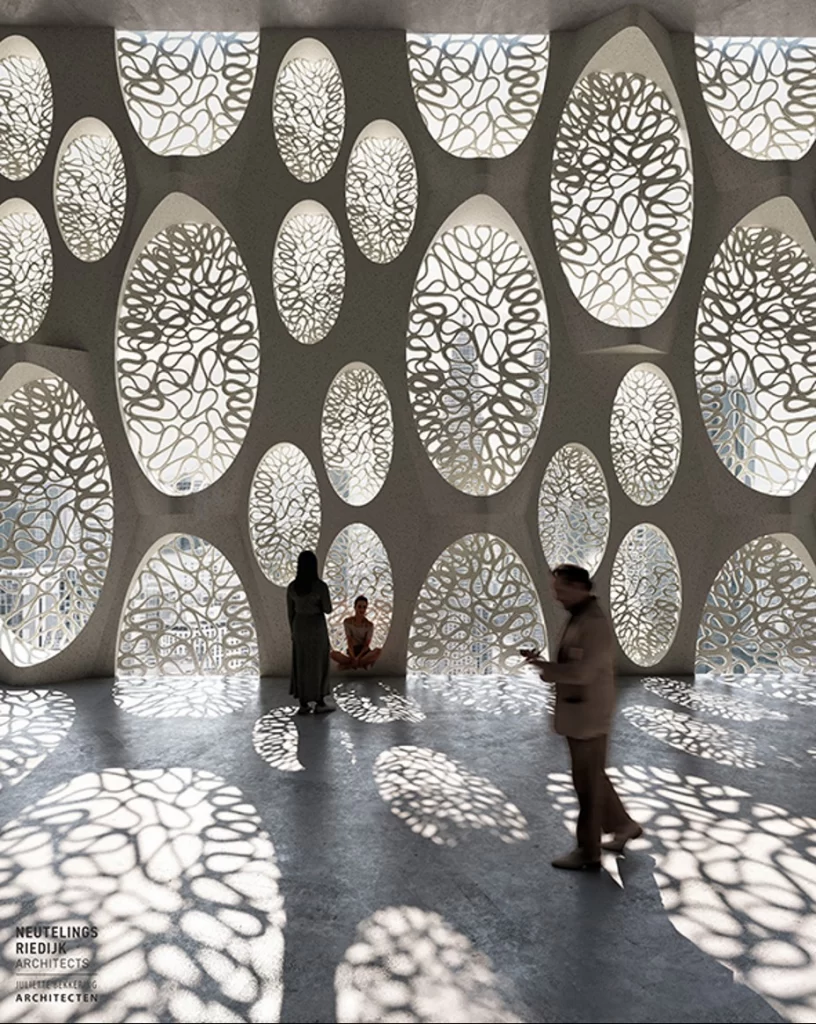
From raw material to fascinating expression
With the 3DCP, unique patterns and embellishments can be easily realized without labor-intensive processes and waste. We were fascinated by the possibility of printing filigree patterns, concrete-like lacework that can be used to create facades and translucent interior walls. A whole range of new architectural expressions can be created using this technique.
With the 3DCP, unique patterns and decorations can be easily realized without labor-intensive processes and waste. We were fascinated by the possibility of printing filigree patterns, concrete-like lacework that can be used to create facades and translucent interior walls. A whole range of new architectural expressions can be created using this technique.
Methodology for circular construction
The research focuses on the need for circular construction, reducing the use of raw materials for concrete formwork and developing optimized material pouring strategies to reduce the use of concrete. The research investigates optimized material pouring strategies for 3DCP on robotically formed sand formwork. It avoids the need for wooden scaffolding, plastic or foam-based formwork for pouring concrete.
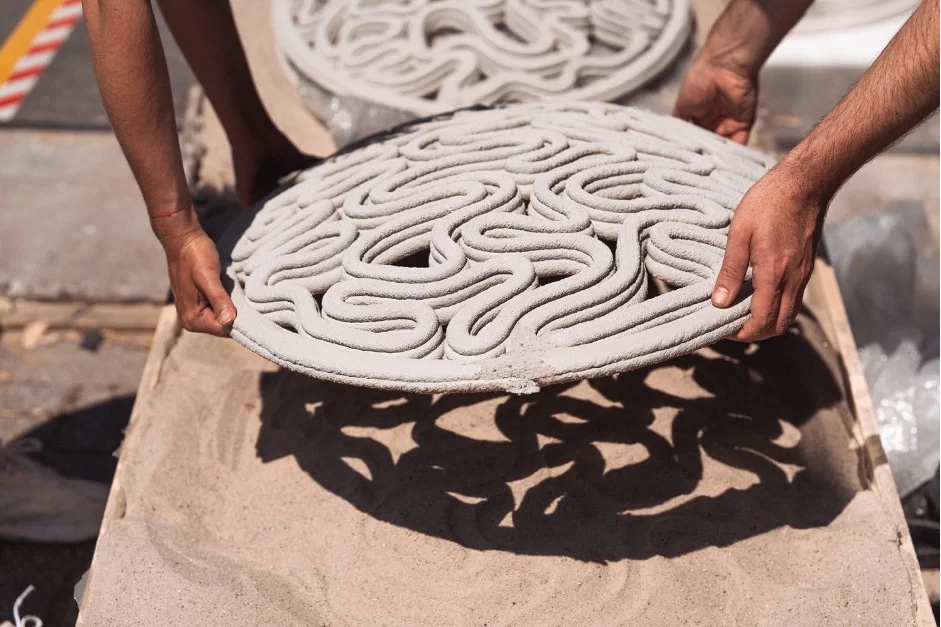
Designing circular material research by Neutelings Riedijk Architects
Through design research, Neutelings Riedijk Architects pursues a recognizable expression made from circular materials in its projects time and again.
From the concrete friezes at the Naturalis Biodiversity Centre in collaboration with fashion designer Iris van Herpen to the 3D concrete printed façade elements in collaboration with TU Eindhoven. ‘To boost biodiversity, we believe it is important to find nature-inclusive and circular solutions in everything we build. What started with the energy-passive Minnaert building in 1999, now leads us to new, contemporary innovations and opportunities that we internalize within the firm and apply in our buildings.’
Currently, Neutelings Riedijk is developing circular bricks, which will be applied in the renovation and expansion of the Amsterdam Museum.
